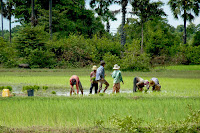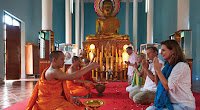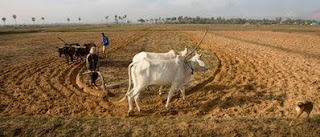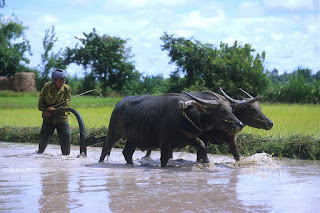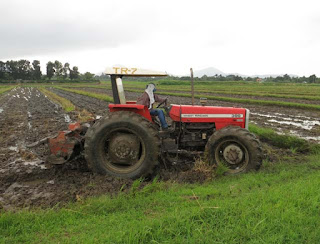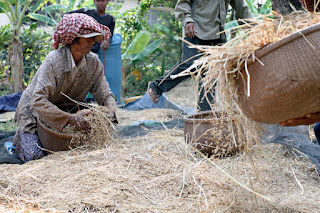Archaeological Find Reveals New Side to Life at Angkor
A recent discovery in a rice field in Angkor Archeological Park has enabled experts to shed new light on life in the capital of the Khmer empire a thousand years ago.
The cause of the excitement is not a new temple, but an iron smelting site.
Researcher always believed that Angkor, the vast city whose population may have reached 1 million at some point, obtained its iron for tools, weapons and construction from distant parts of the realm. The new find is making them think again.
Archeologist Im Sokrithy will explain in a conference tonight in Phnom Penh how he and his team discovered an iron smelting site with four furnaces used to melt ore and extract metal right in the middle of Angkor Park.
“What we found confirmed that it was a smelting site and the site was used to produce metal,” he said yesterday.
Which means that in addition to being home to Khmer kings and filled with scores of temples, Angkor may also have included industrial works.
Located in today’s Zone 2—the zone next to the monuments in the park in Siem Reap province—the site of about 4 hectares is now a rice field in Sala Kravan village, Mr. Sokrithy said.
“This is an important discovery to prove that in the capital city…there were some industries located right there and producing metal to supply the capital,” he said.
Preliminary dating of ceramics found as part of the excavation has led his team to believe the site is from the 11th century. Hopefully, further tests next year will prove this, he said. If so, it would mean the smelting site would have been around in an era of gigantic projects, such as the West Baray water reservoir, which spread nearly 8 km long and 2 km wide, and the Baphuon, Angkor’s biggest monument until Angkor Wat was erected in the following century.
Since very little is known about life and activity in the capital when the Khmer dominated the region, evidence of industrial activity would help draw a picture of the city during that era.
An archeologist with Apsara Authority, the government body managing Angkor Park, a World Heritage site — and a lecturer at the Royal University of Fine Arts in Phnom Penh — Mr. Sokrithy conducted excavations at the site in March 2016 and again in January with an Apsara archeologist team, all of them graduates of the university.
The project is supported by Apsara Authority and the Cultural Relationship Study of Mainland Southeast Asia Research Center in Thailand.
TRAILTOAngkortours and Travel – Kingdom of Angkor
